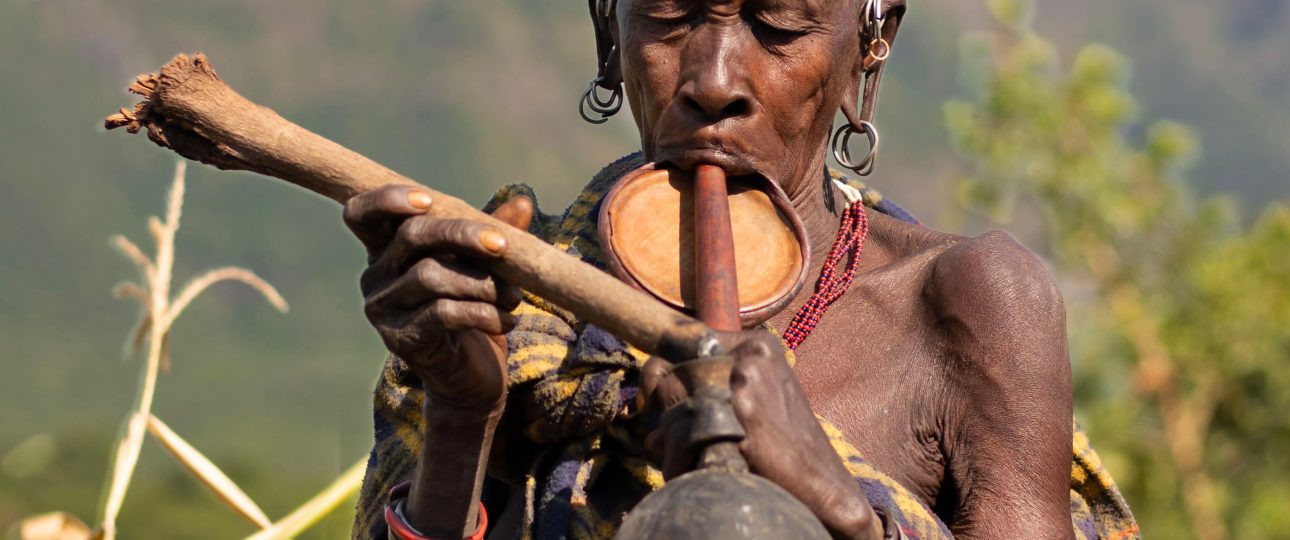Known For: Lip plates, body painting, cattle culture, and remote living
The Suri Tribe, also known as Surma, lives in the remote lowlands west of the Omo River, bordering South Sudan. Like their close relatives the Mursi, the Suri are agro-pastoralists who depend on cattle herding and seasonal cultivation for survival. Cattle are at the heart of their economy, social structure, and spirituality. Boys and young men spend much of the year in temporary grazing camps, while women manage household duties and cultivate the land.
Traditional homes are made from wood and grass, and cooking is done outside on open fires. The Suri follow a semi-nomadic lifestyle, moving with the rains and ceremonies that shape their calendar.
Lip Plates & Body Culture
The Suri are nearly indistinguishable from the Mursi in terms of dress and body modifications. From their mid-teens, Suri girls pierce and stretch their lower lips, eventually inserting large clay lip plates as a symbol of beauty and maturity. Women also pierce their ears and adorn themselves with beads, metal jewelry, and body ornaments.
The art of scarification is widely practiced—both men and women cut intricate designs into their skin using razors, then rub in ash or charcoal to raise the patterns. These marks signify strength, endurance, and rites of passage.
Body Painting
Unlike any other Omo tribe, the Suri are renowned for their vibrant and artistic body painting. Using natural clay pigments in red, yellow, orange, and white, Suri men and women decorate their faces and bodies with expressive, ever-changing designs. These artworks are temporary, symbolic, and deeply personal—reflecting mood, ceremony, or identity. While the Mursi also paint their bodies, the Suri are considered more skilled and expressive artists.
Interpersonal Traditions & Hospitality
While known for their fierce cattle-centered lifestyle, the Suri are perceived as gentler and more welcoming than some of their neighbors. Their remote location means they receive fewer visitors than the Mursi, contributing to their more open and curious attitude toward outsiders.
Intertribal Conflicts
The Suri maintain peaceful ties with the Mursi, but have a history of violent conflict with the Nyangatom, who often raid Suri herds—sometimes with support from Sudan’s Toposa tribe. Automatic weapons have worsened the violence in past decades, though recent trade relations have brought a fragile peace.
The Dizi people, who farm the highlands around Maji and Hanna, have long been looked down upon by the Suri for their lack of cattle. Historically, this relationship was tense, but in recent years, open conflict has diminished.
Join Omo Region Tours to experience the raw beauty of Suri life, their stunning body art, and one of the most remote and visually rich cultures in Ethiopia.

